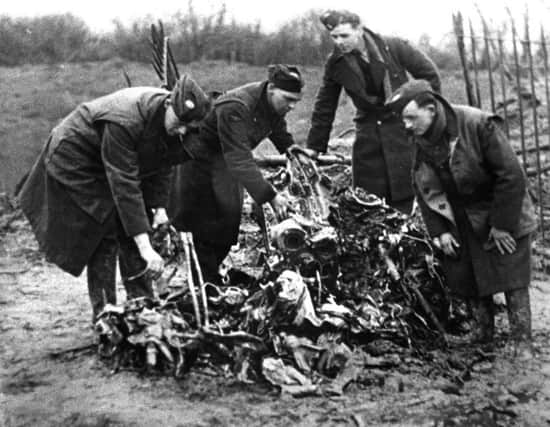Kindness of South Shields nurse is remembered


Thousands gathered in Sheffield last month to watch the flypast, staged to remember the 10-man crew and to honour 82-year-old Tony, who saw the crash while he was playing with friends in a park as a child.
He later learned that the plane had been attempting a crash landing in the park – the largest green space for miles – but diverted course for fear of harming the children. Since that day, in 1944, he has tended to a memorial for the US airmen.
Advertisement
Hide AdAdvertisement
Hide AdSheila wrote: “Watching the flypast took me back to my childhood in the war years.
“I remember standing on the back steps watching Tyne Dock burn (my father was on duty in the Home Guard so would think we would all be safely tucked up in the Anderson shelter!).
“A memory came back to me of a story spread by mouth. The story was that a German pilot bailed out of his plane and his parachute became entangled on some wires.
“He was still alive and was taken to the Ingham Infirmary. He was a blonde good-looking young man. No local people had ever met a German! It was said that the nurses wept – saying that this young man was some mother’s precious son. Can any reader out there corroborate the story?”
Advertisement
Hide AdAdvertisement
Hide AdThe answer, Sheila, is yes they can. Back in February, 2016, Time Of Our Lives, featured this very same story; reporting details of the crash that happened in Bents Park, South Shields.
At the time, Heather V Thomas, was able to shed more light on the incident.
Heather, a volunteer at South Shields library, says: “My late parents, Vera and John Sharp Thompson, often related to me the incident of the night of February 16, 1941, when the German bomber crashed in Bents Park.
“I have since discovered that the aircraft was a Heinkel 111P-4 medium bomber of 6th Squadron, 4th Bomber Group (6/KG4), based in the Netherlands, and piloted by Oberfeldwebel (Flight Sergeant) Wilhelm Beetz.
Advertisement
Hide AdAdvertisement
Hide Ad“While bailing out Beetz’s parachute was caught in trolley bus wires near the Sea Hotel.
“Although he was electrocuted, Beetz did not die immediately, but remained for some time entangled in the wires, only to die later in the Ingham Infirmary.
“The reason why this sad event became so significant for my family’s history is that my father happened to be a patient in the Ingham Infirmary at that time.
“He had been hospitalised there for many months, suffering from rheumatic fever, which he had contracted as a volunteer auxiliary fireman on night duty in Laygate.
Advertisement
Hide AdAdvertisement
Hide Ad“His condition was caused by sleeping in a bunk with a saturated mattress while awaiting call-out.
“While in the infirmary, the dying pilot did cry out for his mother, as you reported in your column.
“But for my parents,the most significant aspect of this incident was the real humanity shown by a kindly nursing sister.
“Hearing his desperate cries, she put on her overcoat to cover her uniform, sat beside Wilhelm Beetz and pretended to be his mother, comforting him as he approached death.
“The 23-year-old Luftwaffe pilot died at peace.
“He and his four comrades are buried in Hylton Cemetery.”